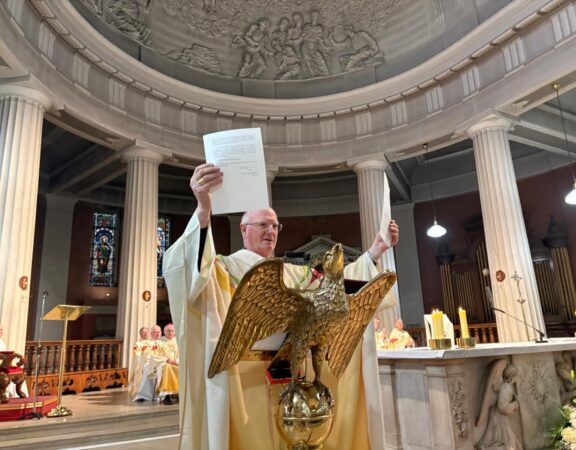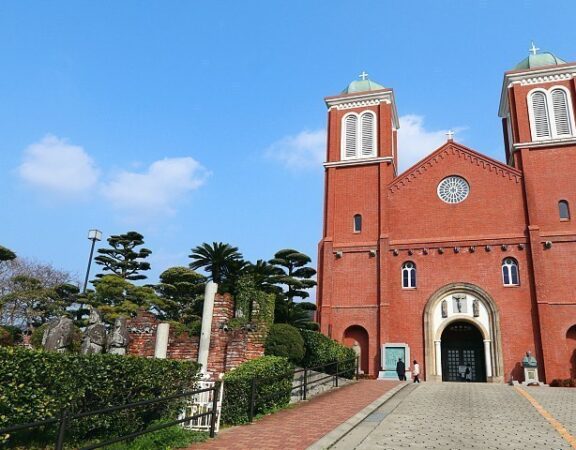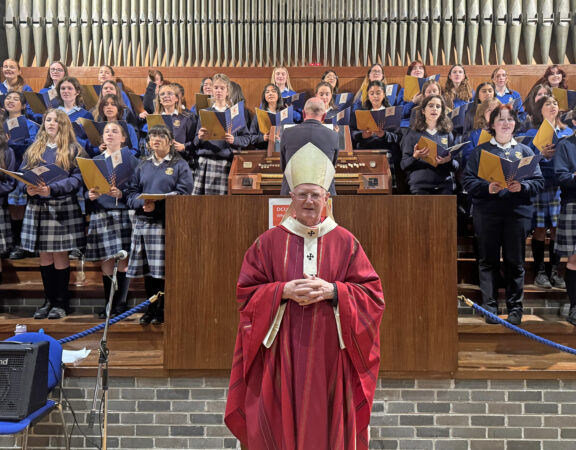Most of us will have fond memories from our own homes – in so many parts of the world – of the figures of the three wise men who were kept on the fringes of the family crib for most of the twelve days of Christmas and who were then finally introduced into the crib with the child Jesus on this day, the Feast of the Epiphany.
Epiphany means manifestation. The Christ child is manifested today in an extraordinarily striking way to these three wise men from the Orient. To us in what we call the West, even today, colourful figures from the Orient have their fascination, representing something different, enriching and fascinating culturally and spiritually. Even today for us who live in the rational, secularised world of West the different manner of the search for God and of the experience of God which is typical of the Orient leaves us fascinated and mystified.
On the Feast of the Epiphany these three men of wisdom and scholarship arrive to worship and recognise the new born child. They represent something which for many faithful believers of the people of the promise is new and unforeseen. They are an unmistakable sign, given right from the very moment of his birth, that the saviour who is revealed is a saviour not just of one people, but as a saviour with a redeeming message destined for all. The saving message of Jesus is no longer one limited to an individual chosen people in ethnic terms; no individual, no ethnic or religious group is excluded from the people formed by the message and the life, death and resurrection of Jesus.
The Church is called to be a sign of the unity of all people in Jesus Christ. That is the mystery which we celebrate in a very concrete manner here this evening, as the Church in the Archdiocese of Dublin reaches out and welcomes as equal members of the family of the Lord, people from many nations and ethnicities who have come to make their home here in Dublin, each with their own rich traditions and cultural heritage, which remain intact but which also go into the construction of a new and beautiful mosaic which we call a New Ireland.
I welcome each of you here this evening, from our different parish communities, from our national chaplaincies. I welcome the Lord Mayor of Dublin, our first citizen. Lord Mayor, I think that we have much to be proud of in the manner in which Dublin has quite rapidly built up a new and diverse composition of our citizenship, welcoming people from a variety of countries and cultures as Dubliners.
But let us go back to our Gospel reading and look at the path that these wise men, restless, enquiring and curious in their desire to know the true God are challenged to follow.
The star represents the enquiring human mind which seeks meaning and truth. The wise men try to interpret the star, to interpret what we would today call the signs of the times. This questioning and search takes them on a journey which leads them to Jerusalem to gather information about where the king of the Jews was to be born.
Interestingly they go to Herod, perhaps because the wise men were of such a level in society that they were used to the company of the powerful or even had friends in court. Herod for his part turns to the chief priests and the scribes of the people, to the religious scholars, who delve into the words of the prophets and are able to give a clear indication of the place where the saviour was to be born.
The wise men move on then led to some extent by the hypocritical words of the King and a technically correct interpretation of the scriptures by scholars, but one which was not a reading in faith of the revealed word.
At this moment, the star reappears and guides them finally to the place where they find the redeemer. These wise and significant men, chosen to be the ones who would be the first symbols of the God’s revelation to all peoples, familiar with the ways of the world and the results of scholarship only come to the true recognition of Jesus when, like Mary and Joseph, like the shepherds and indeed like us they come to a manger, to grotto fit only for cattle. It is there they find Jesus, not because of some mistake of history but because Jesus cannot be found anywhere else.
Worldly wisdom and political wiliness, scholarly research and understanding of the scriptures, even when coupled by the desire to follow the light of the path of sincere questioning will only lead to the recognition of the identity of Jesus if we also are led to the manger, to a place which symbolises radical detachment from every dimension of wealth and power; a place where the value of human life is not linked to power and prestige, but to the simple detachment of a helpless child. Jesus cannot be found anywhere else. Everyone – the powerful, the learned, the wealthy and the celebrity – must make that same journey to the stark simplicity of the manger that the three wise men did. There is no fast track for anyone.
Jesus can only be found when we strip ourselves of all the human additions and short-lived supports which we tend to build around ourselves to create our own self-image, our own identity. Human dignity needs no image making. Human dignity belongs to the weak as much as to the powerful. Human dignity has no privileged corner for the powerful or the prestigious. It belongs to all identically.
The mosaic of a New Ireland which we are challenged to create must be one where the dignity of each person is recognised for what it is. That is why we welcome everyone who comes to our shores for the dignity that belongs to them; we greet their creativity and the contribution they have brought to our culture and economy; we recognise the sacrifices that parents of any ethnic group make to ensure that their children are cherished in the same way. This is a day in which we celebrate. Before the simplicity of the manger we reject any sense of smugness or superiority and commit ourselves to working together so that mosaic of a New Ireland we have to create, in times that are not easy, will not be a superficial image-making stunt, but one that endures and of which we will be proud. ENDS







